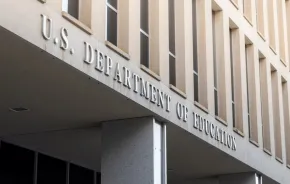
A seven-year-old Utah boy recently made national news for his Mohawk — a hairstyle often associated with the rebellious image of 1970s punk rock. Many of those original punk rockers are now grandparents, which takes some of the edge off the image. But the Mohawk haircut, as the name implies, is even older than the now-senior citizens who introduced it to pop culture. It’s a traditional hairstyle among many Native American groups, including the Seneca Nation, to which the boy’s father belongs.
Administrators at the Santa Clara, Utah, elementary school (named, ironically, Arrowhead), got a very public education in Native American tradition after deeming young Jakobe Sanden’s haircut “a distraction” and notifying his parents that the boy would have to get it cut or leave school.
Messing with the wrong tribe
The school district’s dress code doesn’t address hair length or cut specifically, but does say that “students have the responsibility to avoid grooming that causes a distraction or disruption, interrupting school decorum and adversely affecting the educational process.” It also states that “extremes in body piercings, hair styles and hair colors may be considered a distraction or disruption.”
When Jakobe’s father refused to get his son’s hair cut, the district requested documentation from tribal leadership verifying the cultural relevance of the hairstyle. Sanden didn’t hesitate to contact the tribal council, and Seneca Nation Tribal Councilor William Canella promptly responded with a letter to the district’s superintendent. He wrote:
“It is common for Seneca boys to wear a Mohawk because after years of discrimination and oppression, they are proud to share who they are. It’s disappointing that your school does not view diversity in a positive manner, and it is our hope that Jakobe does not suffer from any discrimination by the school administration or faculty as a result of his hair cut.”
Jakobe was allowed to keep his haircut, and the matter was quickly, if not quietly, put to rest. But the episode raises the question: If classmates can study alongside the distraction of a cultural tradition, why bother banning an identical fashion choice?
What’s the point, again?
School dress codes have a long history of challenges that have resulted in a framework of analysis for their constitutionality, but applying that framework is still a murky process, in part because so much is left to the discretion of local administrators. Most parents are comfortable with eliminating clothing that features gang colors or racially charged epithets from classrooms, since it’s easy to understand how those things could make some students feel unsafe and would interfere with their learning.
But lately dress codes have been coming under fire not because they limit free speech, but because they are themselves discriminatory. Dress codes are often different for boys and girls, and girls appear to be disproportionately punished for dress code violations. In some places, only girls are subject to the dress code. An increasing number of challenges are related to the way that school dress codes are being used to police girls’ modesty and the sexuality of gender-nonconforming teens.
What is the net impact of school dress codes? Do they facilitate learning or promote discrimination? Conclusive data is lacking, but as one Utah school district recently learned, when a dress code conflicts with Native American tradition, the answer is clear — better step back.
This article was originally published by Avvo.











